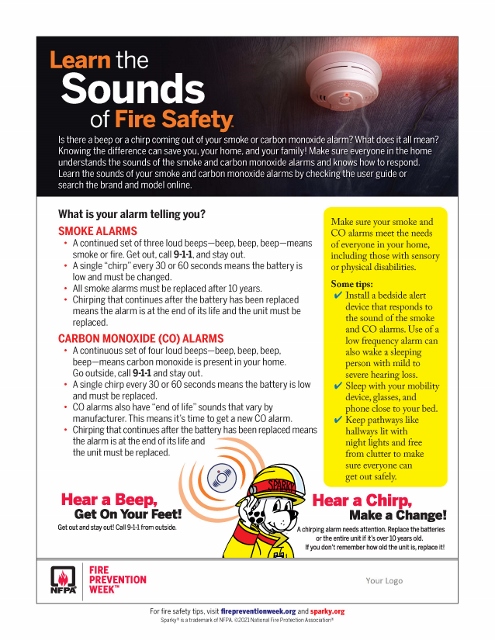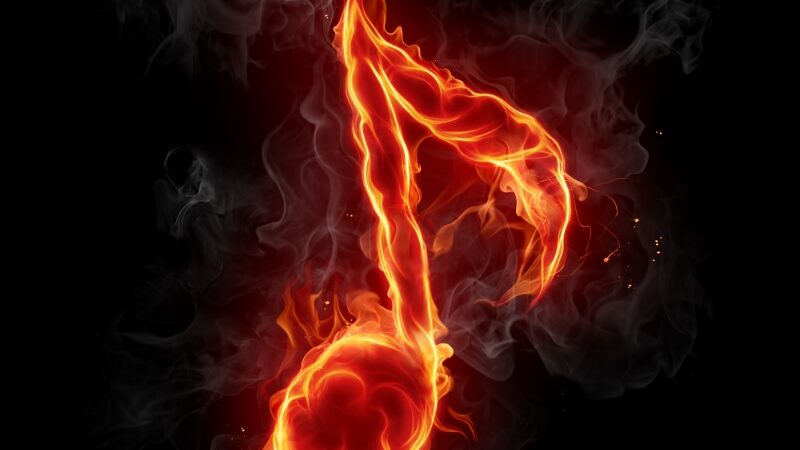Article by: Greg Breyer
This year’s Fire Prevention Week (2021), themed by NFPA as, “Learn the Sounds of Fire Safety” recently passed; however, it is our hope and objective to keep fire safety at the top of your mind all year round. Our passion in “Fighting the Fire Before it Starts” is for the safety & welfare of our families, team, customers, and community as a whole.
Shown below are some critical concepts worthy of consideration;
• Generate, understand, and practice your Safety/Evacuation Plans at Home AND at work.
• Understand the sounds of smoke alarms, detectors, and fire alarm systems.
• When there is smoke inside; go outside.
• When outside; STAY outside.
• Go to your safe meeting place and await the First Responders.
What sounds should we be aware of?
Statistics and life experience has proven beyond a reasonable doubt that properly operational smoke alarms/detectors save lives! When testing your equipment (on a monthly basis) the sound that is emitted when in “alarm”, is a continued set of (3) beeps, which is telling occupants to go outside and stay outside.
In a One or Two-Family Dwelling, occupants should have a smoke alarm, which can be powered by long-life battery, 9 Volt battery, or 120V house current (or combination thereof) in each bedroom and one each floor. Carbon Monoxide alarm/detectors should also be installed in close proximity to the sleeping areas, and per floor. When these are activated, you hear a continued set of (4) beeps, telling you to go outside.
Did you know, the life expectancy of CO & Smoke Alarms is only 5 – 10 years? When nearing their end of life, or other trouble issue, you may hear a “chirp” typically once every 30-60 seconds. This sound is telling occupants that action is needed in the way of service.
Difference between Alarm and Detector
The main difference between an “alarm” and a “detector” relates to the integration of a fire alarm system. In commercial and multi-tenant occupancies, smoke detectors are typically installed and connected to a fire alarm system. When initiated, appliances (i.e. Horn/Strobe or Speaker/Strobe) activate in the building, telling the occupants to go outside and stay outside. As much as the inherent helper in us may suggest we find out why the fire alarm is going off, please remember to go outside, allowing trained emergency personnel to properly investigate. The fire alarm system should remain activated until approval is granted by the responding Officer in Charge (First Responder) to the Property Owner Representative.
Due to more stringent standards, the smoke detectors interfaced with a system like this may exceed 5 – 10-year life span, when properly tested and inspected by qualified professionals. Sprinkler systems and other life safety components are also tied into commercial fire alarm systems; again, in the event of an activation please go outside allowing a proper AND safe investigation to take place.

Plan, Practice, Repeat
Fire & Carbon Monoxide emergencies occur in the home, as well as, at the workplace; typically, when they are least expected. This is why it is critical to ID your safe meeting place, and practice your evacuation. Doing so in advance will prove crucial in the event you experience an emergency. Like everything else in life, practice makes perfect and with little time to think in an emergency, these repeated practices become instincts, and instincts save lives.
Remember that smoke is visible, and when exiting a building, crawl low in smoke. However, carbon monoxide is colorless, odorless, and tasteless so we cannot confirm its presence safely with our human senses.
We all have a part to play, and as “Sparky” tells us
For Emergencies:
“Hear a Beep, Get on Your Feet.” “Get out and stay out! Call 9-1-1 from outside.”
-NFPA Spokes-Dog Sparky
And, for service;
“Hear a Chirp, Make a Change! A chirping alarm needs attention. Replace the batteries or the entire unit if it’s over 10 years (max) old. If you don’t remember how old the unit is, replace it!”
-NFPA Spokes-Dog Sparky
Help us, help you, and spread the word of fire safety!

To Learn more about the Sounds of Safety visit NFPA at the link below.

